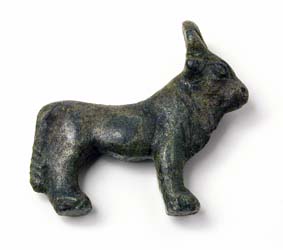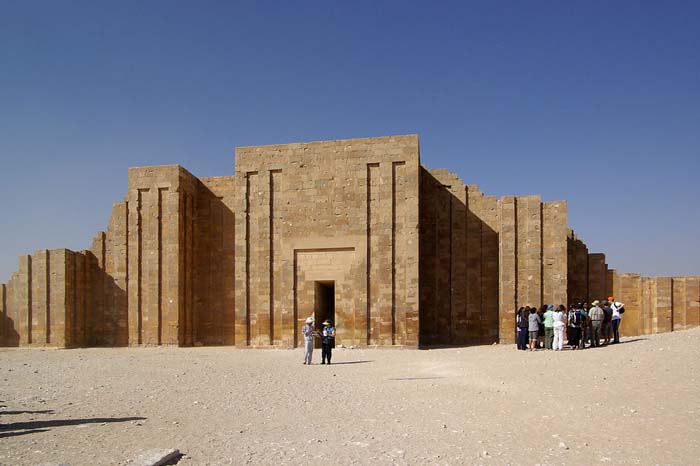Saqqara
The Egyptian burial ground at Saqqara is vast and ancient, serving as the main necropolis of the ancient capital of Memphis. It houses the famous Step Pyramid of Djoser within its grounds as well as numerous mastaba tombs. The importance of Saqqara as a burial complex lasted for well over 3,000 years, stretching into Roman times.
Location of Saqqara
The Nile Delta entrance marks the location of Saqqara. This is the West bank, where the river begins to branch off in a number of arms. The very first tombs, built in the First Dynasty, were built on a desert plateau here.
To the North, about 10 miles, is Giza; to the South at six miles is Dahshur; and to the South-West, at about 25 miles, is the modern capital of Cairo. The monuments of Saqqara furthest to the north are the Archaic Tombs, slightly to the South of the Abusir necropolis, which was built in the Fifth Dynasty.
Some consider Dahshur to be part of Saqqara at its southernmost point, however, the monument furthest to the south of Saqqara was built by Shepseskaf, who was the final king of the Fourth Dynasty. At the beginning of that dynasty, there were already pyramids being built in Dahshur and a large expanse of untouched desert between it and Saqqara.
The area of Saqqara covers about 3.5 square miles and is usually split in two, to contain Saqqara North and Saqqara South. Each of these two parts can be further divided to contain several smaller necropolises.
- Saqqara North is considered to be the area between the Archaic Tombs and a complex called Sekhemkhet, which remains unfinished. It contains the following cemeteries: Northern, Teti, Netjerikhet and Unas. The Netjerikhet Cemetery contains the Djoser Step Pyramid and surrounding complex.
- Saqqara South begins to the south of the unfinished Sekhemkhet complex. It contains a number of pyramids, royal monuments and other tombs. Its defining characteristic might be the strangely-shaped tomb of Shepseskaf.
History of Saqqara
The earliest noble burials in Saqqara go all the way back to the First Dynasty. The graves were located on the North side of the complex. At this point in time, the royal burial ground was considered to be Abydos.
The last king of the Second Dynasty, Khasekhemwy, was buried at Abydos as was custom, but he also had a monument built known as Gisr el-Mudir. This monument was a large rectangular enclosure that is thought to be the inspiration for the enclosures around Djoser's Step Pyramid.
Some of the earliest dynastic monuments at Saqqara include:
- King Hotepsekhemwy's tomb
- King Nynetjer's tomb
- King Sekhemkhet's burial complex including the Buried Pyramid
- King Khasekhemwy's burial complex including Gisr el-Mudir
- King Djoser's burial complex including the Step Pyramid
In the Fourth Dynasty, the majority of the kings chose to build their pyramids and complexes elsewhere. In the Fifth and Sixth Dynasties, the kings returned to Saqqara for their burial complexes and pyramids. The pyramids in these dynasties are not as well preserved as others because the cores were made of rubble. At this time, nobles were usually buried in mastabas near the king's pyramid. Consequently, a variety of tombs cluster the complexes of these pyramids.

© Vincent Brown - Layout of Saqqara and Abusir
Some of the Old Kingdom monuments in Saqqara include:
- King Userkaf's pyramid complex from the Fifth Dynasty
- King Shepseskaf's tomb from the Fourth Dynasty
- King Djedkare's pyramid complex Haram el-Shawaf
- King Teti's pyramid complex from the Sixth Dynasty
- King Pepi I and II's pyramid complexes
In the Middle Kingdom, Memphis was no longer the capital of Egypt and the kings constructed their burial complexes elsewhere. Very little from this period has been found in Saqqara. That changed in the New Kingdom when Memphis was once again the center of the military and administration. Various monuments from this period are located in Saqqara, including the tombs of several top officials.
After the New Kingdom and into Roman times, Saqqara continued to be used as a burial ground. Several monuments remain from this time, including the Philosophers Circle, Coptic monasteries, the Serapeum and a number of shaft tombs for high officials. The Serapeum was a burial ground for Apis bulls, which were believed to be avatars of Ptah. It was believed they became immortal after they died.

© Ashley van Haeften - Apis Bull Figurine
The Step Pyramid of Djoser
The Step Pyramid of Djoser is probably the most famous monument located in the necropolis of Saqqara. It was the tomb of King Djoser, as built for him by his vizier, Imhotep, who was also a genius architect.
The pyramid is actually a series of mastabas built atop each other, thus giving the step-like appearance. It appears that this eventual construction of mastabas as building blocks was a revision of the original plan. It was built in the 27th century BC in the Third Dynasty of the Old Kingdom. Djoser was either the first or second king of that dynasty.

© Ed Yourdon - Djoser's Step Pyramid
The Step Pyramid was an innovative building for its time. It was the first monument constructed of stone. Most other monuments at this time and earlier were mostly constructed of mud-brick. The amount of labor required to build something like the Step Pyramid is staggering all by itself. This points to Djoser's government at the time having a much wider access to both resources and human control. The structure of the Step Pyramid set the precedent for the other pyramids that would follow.
The area around the Step Pyramid was just as vast and impressive as the pyramid itself. It included a number of chapels around the base and then a huge courtyard surrounding it. To finish, the entire complex was enclosed within a huge rectangular structure. Outside of the enclosure wall is a great trench dug into the rock.
The entire vast complex consists of the following identified parts:
- Enclosure Wall
- Great Trench
- Roofed Colonnade Entry Hall
- South Court
- South Tomb
- Step Pyramid
- Burial Chamber
- North Temple
- Serdab Court
- Heb-sed Court

© Berthold Werner - Entrance to Djoser's Funerary Complex
Interesting Facts About Saqqara
- Saqqara contains the oldest of Egypt's pyramids in the Step Pyramid of Djoser
- It continued to be a burial site well into Roman times
- The Abwab el-Qotat is found in Saqqara, containing hundreds of mummified cats
- Old Kingdom tombs containing numerous well-preserved drawings are at Saqqara
- Saqqara is located in the Lower Kingdom, near the Nile Delta
- The Step Pyramid was designed by Imhotep, who was later deified
